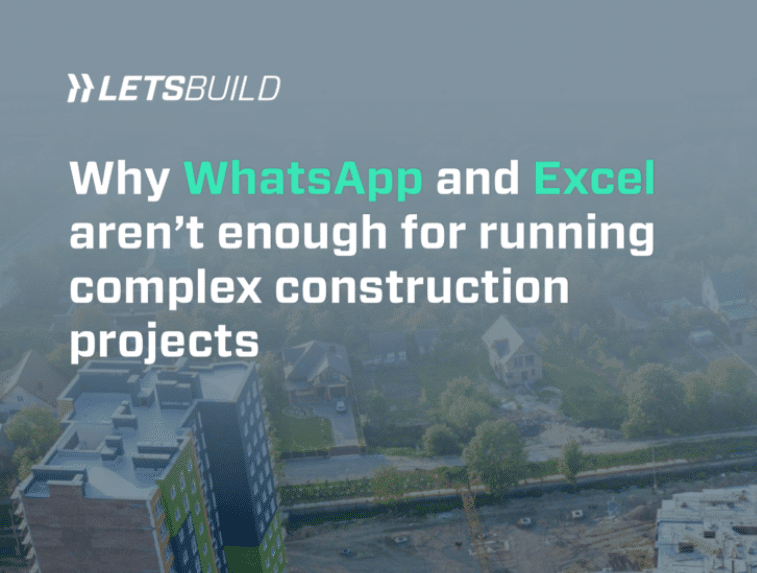It’s no secret that technology is revolutionising literally every aspect of modern day life. The construction industry, continually being updated and upgraded with the latest technology, is one such example of this.
Technology in construction comes with devising innovative new ways of constructing and whilst the changing future of construction is largely unknown, there are some construction technology trends that are paving the way for certain futuristic construction technology.
So, what can we definitely expect the future to hold for construction? Here’s ten futuristic construction technologies of the future for you to have a gander at.
1. Self-healing concrete
Millions of pounds are invested in maintaining, fixing and restoring roads, buildings, tunnels and bridges annually. This is because all concrete eventually cracks and needs to be restored. Self healing concrete would add years to a building’s life and be an enormous help time-wise and financially.
The science behind this technological marvel shows itself when water enters a crack. This reactivates the bacteria that was mixed in during the mixing process. When the bacteria is activated, it excretes calcite which then heals the crack.
2. Transparent aluminium
Transparent aluminium is a bullet-proof new state of matter that is almost as strong as steel. Despite its herculean strength, it looks like glass which is four times weaker and shatters easily. Transparent aluminium is a new material and a see-through metal that is just breaking through the construction industry and adds a futuristic feel to buildings.
This new material is such advanced construction technology that it is made out of aluminium oxynitride (AION) and is created through the use of laser technology.
3. Aerogel insulation
Sometimes known as ‘frozen smoke’, aerogel is semi-transparent and is produced by removing the liquid from a gel, leaving behind the silica structure which is 90% air. Despite being almost weightless, aerogel holds its shape and can be used to create thin sheets of aerogel fabric.
Aerogel fabric is beginning to be used within the construction industry, due to its incredible insulation properties. Aerogel insulation makes it extremely difficult for heat or cold to pass through and has up to four times the power of fibreglass or foam insulation.
4. Robotic swarm construction
Developed by researchers at Harvard, robotic swarm construction was designed based on how termites work. Termites work together like a ‘swarm’ and construction robotics are programmed to work together in this manner.
Four-wheeled robots are programmed in each instance to build a certain design and come with sensors to detect the presence of other robots, so that they can work together.
5. 3D printed houses
3D printed houses are a glimpse into the future of construction. 3D printing homes will involve creating parts off-site and constructing the building on another occasion. It was pioneered by Apis Cor and based on San Francisco recently proved that they can 3D-print walls out of concrete in a relatively short space of time.
The ‘printer’, which is similar in look to a small-scale crane, sets layers of concrete mixtures. 3D printed homes could be a great solution for quickly covering the housing needs of people who have been affected by physical disasters such as tsunamis, hurricanes and earthquakes or for those in poverty.
6. Smart roads
Also known as smart highways, smart roads are the future of transport and involve using sensors and IoT technology to make driving safer and greener. They give drivers real-time information regarding traffic information (congestion and parking availability for example) and weather conditions. This innovative technology can generate energy, charging electric vehicles on the move, as well as for street lights.
7. Bamboo cities
Bamboo cities are cities made from innovative modular bamboo structures that interlock. It’s a form of sustainable construction and a renewable resource that is stronger than steel and more resilient than concrete. The purpose is to hold a new community in the trees and as the number of inhabitants increases, the structure will extend to accommodate this.
As the structure extends to accommodate the number of people, it grows in strength. Modular structures are incredibly scalable and can grow in any direction, making it perfect for a city in the trees. Another added bonus – they can resist earthquake tremors due to bamboo’s high flexibility.
8. Smart bricks
Smart bricks are modular connecting bricks and are similar to ‘Lego.’ Made out of high strength concrete and developed by ‘Kite Bricks’, smart bricks are versatile and come with substantial thermal energy control and a reduction in construction costs. As they are modularly designed, they are easy to connect and have space for insulation, electricity and plumbing.
9. Vertical cities
Vertical cities may soon become reality as the world’s population grows and land increasingly becomes scarce. They are tetris-like buildings of towers for thousands of people to inhabit. Supporting an blooming population, vertical cities are a space-saving solution to preserve land for food, nature and production.
10. Pollution fighting buildings
Also known as ‘vertical forests’, they are high-rise forest buildings designed to tackle air pollution. Pollution fighting buildings will be home to over 1,000 trees and 2,500 shrubs to absorb pollution in the air and to help filter it to make the air cleaner. Trees are highly productive in absorbing carbon dioxide, making this a cost-effective construction innovation.
Wrapping it up!
There you have it – 10 futuristic construction technologies of the future. Construction technology trends will always follow a typical pattern – how to build quicker and smarter, how to be more environmentally friendly and how to house people in different ways. Construction inventions and construction materials will always advance – who knows what the future holds?
Author Bio: A content writer for EasyBuild, Laura Driver is an experienced copywriter living on England’s south coast. Originally from Newcastle and holding degrees in Linguistics and PR, she produces content on a wide variety of topics, ranging from construction and law, all the way to technology and art.





